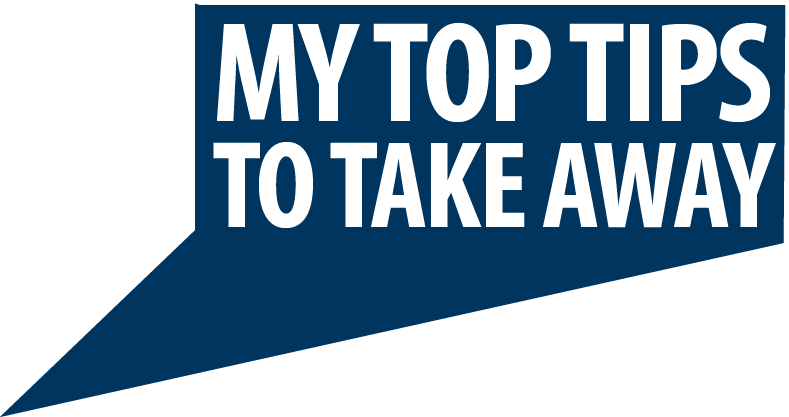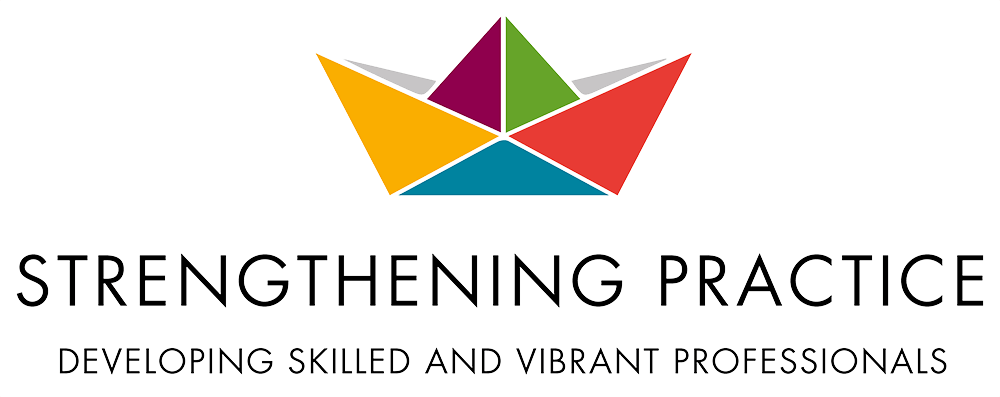

By Phil Rigotti
Lead Trainer

Eat more brain food.
……………………………………
Learn to go to work and come home again even when you didn’t go anywhere.
……………………………………
Do something everyday that doesn’t include a screen.
……………………………………
Move your body more – it’s the only one you’ll ever have.
……………………………………
Check-in with colleagues regularly and in different ways.
……………………………………
It was sometime around Mid-March and it had been brewing for a week or two. We knew about hand sanitiser and the persistent cough and we were all a bit nervous about what might happen next.
Then on 23rd March 2020, the Prime Minister gave an address to the Nation:
“From this evening I must give the British people a very simple instruction – you must stay at home. Because the critical thing we must do is stop the disease spreading between households. That is why people will only be allowed to leave their home for the following very limited purposes:
- shopping for basic necessities, as infrequently as possible
- one form of exercise a day – for example a run, walk, or cycle – alone or with members of your household;
- any medical need, to provide care or to help a vulnerable person; and
- travelling to and from work, but only where this is absolutely necessary and cannot be done from home.
That’s all – these are the only reasons you should leave your home.”
This changed it all – you had to stay home and only go out for some very specific purposes, and even then, not for long. For many of you, and for us at Strengthening Practice, that was the day that you realised that you were not going to be going to work in the old-fashioned sense for a while. Lockdown had started, and for some they literally got locked down in the wrong place, at someone else’s house, in a hotel in Lanzarote, at a friend’s house, in the residential home where they were working.
Fast forward 5 months.
So, here we still are. At home. Working.
How is it going for you? No, really. How’s it going?
By now you have your home office set-up – what is it? Dining table / Lounge / Bed / Ironing Board (yes really…)? Some of you had to upgrade your internet – no internet at home? What were you thinking, this is 2020! As much as you might like to uphold the idea that working from home has all been ‘fine’ we have to accept that there have been and continue to be some adjustments to make.
I want to unpack just 5 of these.
- Are you taking a lunch break?
- How many hours are you actually working?
- What about ‘screen time’?
- Been to see a physio recently?
- Human contact? What’s that?
- Are you taking a lunch break?
This is not only about lunch obviously, although clearly that’s important. But it is about how you treat your body and especially your brain. Probably your job requires you to think – and to think in specific ways. You have to handle complex information; you have to process it and organise it somehow and you have to make decisions. You have to use language in different ways and make sense of it. And you will be doing this about lots of different things all day every day. Many of us forget that our brain needs to be fed and watered well to be able to work to the capacity we require of it.
If you were to decide today to go on a long hike or a long-distance run then you wouldn’t expect to be able to do that without having some food and drink with you or at least in you. For those of you that do some kind of sport you may have got used to taking a supplement or at least the idea that you need a certain kind of nutrition to sustain the level of activity. Your brain is no different.
This isn’t so much about how you think or what you think about, but more about how you are able to think.
Your brain is responsible for several obvious and important things not only that keep you alive but also that allow you to do the work that you do. Since lockdown our brains have had to make some pretty significant adjustments – processing information that is almost exclusively screen based or audio, making sense of human interaction in only two dimensions, learning new processes, managing the neurological impact of stress and anxiety, and so on.
Did you think that your brain would be just able to do that without any extra support?
You might sit on a cushion so that your bum doesn’t go numb, but what accommodations are you making for your brain?
You can start by feeding your brain well – and no that doesn’t mean your favourite take-away or an extra slice of cake! The BBC have put together a helpful guide for the kinds of foods that help your brain.
https://www.bbcgoodfood.com/howto/guide/10-foods-boost-your-brainpower
And of course, the same as the rest of your body, once you have fed your brain and worked it all day, you also need to give it enough downtime. This is where it does all of its processing and filing and also where it restores the chemical and electrolyte balances. But of course, we know that don’t we!!
Check In One
How are you feeding your brain? How much downtime are you giving it?
- How many hours are you actually working?
A recent study commissioned jointly by LinkedIn and the Mental Health Foundation[1] revealed that a quarter of the respondents (25%) feel pressured to respond more quickly and be available online for longer than they normally would, with one in eight (12%) now signing in before 7 am and 18% still working after 7 pm. This study also found that on average people were working an average of 28 hours a month more during lockdown.
When lockdown happened many of us had to adjust to a very different way of managing our day, not least because in that moment we all became responsible in some way for our own working hours. Before Covid19 most of us would have ‘gone’ to work in one way or another which meant that we would have gone at a certain time, probably to coincide when many of our colleagues also arrived. The same follows for the end of the day, once someone decides it’s home time then others start to go home too. Of course, there have always been outliers and exceptions – and you might have been one of those, the ones who know the name of the caretaker! IN this new context you are missing those social queues and norms that provide structure and balance in your day – if you decide to work late into the night now, does anyone know?
It may be also true that since lockdown you have felt more able to take a break during the day, or start later, but it may also be the case that your work / home boundaries have become very fluid. Those moments of ‘I’ll just do this quickly’ do all add up and may be contributing to overall feelings of tiredness.
Check In Two
How many extra hours have you been working? What have you been working on? What is your ‘work’ routine like?
- What about ‘screen time’?
We know this right? Too much screen time is bad and fries our brains and rots our eyeballs – or so some parents have been telling their children. The reality isn’t as flamboyant as that but too much time in front of a screen isn’t healthy. We all know of the impact of blue light on our brain and how it can impact on sleep, but you may never have thought about how your eyes are coping with staring into a screen at a fixed distance all day – when do they get a chance to refocus?
You’ll find some useful advice and guidance from the place you should have gone to. https://www.specsavers.co.uk/eye-health/computer-eye-strain-symptoms-and-solutions
This isn’t only about your eyes and brain but also about the rest of your body. The human body was never intended to be sat still staring ahead and the consequences are experienced by many of us – stiff neck, bad back, numb bum, sore eyes, you know the list. More about that in point 4 below…
I’m going to leave you to your stagnant guilt when it comes to the amount of screen time you’ve accumulated and got used to. What I really want you to think about now is how you’ve changed your behaviour. Maybe you have a job that required you to spend most of your day in front of a computer anyway? Even so you will have still gone to the office, walked through the building, moved around to go to meetings, popped to the shop for a sandwich, turned to talk to a colleague, used the telephone, and so on. The point here being that your eyes had an opportunity to work differently.
For a while there’s been some great advice going around known as the ’20-20-20 Rule’: it’s really easy to understand.
Every 20 minutes, look 20 feet away, for 20 seconds.
This will help reduce eye strain and other screen related eye problems. There are also several apps available that will remind you to do this. Just search for ’20-20-20 rule reminder app’ and you’ll find several examples. Alternatively, to avoid having another screen tell you about reducing screen use…you could try to build less screen time into your schedule!!
Check In Three
What do you do now that isn’t screen based? How much of your day is screen based?
- Been to see a physio recently?
Like many of you, I’ve spent a lot of time on webcam calls with people over the last five months. I’ve seen people on sofas, dining chairs, beds, garden loungers, the floor, rocking chairs, and horses. Well okay, maybe not a horse – but certainly a real cornucopia of sitting arrangements. For some folk, the lucky ones maybe, they already had a home office with a nice chair and suitable desk and all the appropriate accessories. I suspect for many of you that wasn’t the case and you had to make some adjustments.
I’ve already suggested that your job pre-Covid probably also included a lot of sitting in front of a computer. But I want you to think about what else you did; how else did you move around? Even if it was walking to a meeting and back, going to make a drink or going out for a wholemeal falafel sandwich, at least you moved your body. The test here is whether you have started to set yourself up for the day so that you don’t need to move from your desk at all…Are you trying to break some kind of endurance record??
There is a great, albeit mildly depressing website http://www.getbritainstanding.org/index.php that campaigns for people to spend more time standing in Britain (you guessed that right?) and they have a very easy to use ‘Sitting Calculator.’ This will, if you’re anything like me, tell you that you are at high risk from your sitting habits. (By the way…they only allow 8 hours of working time – I refer you back to point 2 above.)
If you’re interested in changing your behaviour and saving your life, then why not sign-up to their challenge in September. I might watch the challenge online….! http://onyourfeetday.com/britain/challenge
Also very useful is the advice from a group of Ergonomic Practitioners – there are some simple things that we can do that will help us stay fit and healthy.
Check-In Four
What adjustments could you make? Are you sitting down more than you need to?
- Human contact? What’s that?
Your connection might be always on, but maybe you don’t feel connected?
Everyone’s experience and need is different when it comes to the real, face-to-face, seeing the colour of their eyes aspects of human contact. It may well be that for some of you working from home instead of the office has allowed you welcome respite, we all know that working in offices can be distracting and frustrating some of the time. It seems to be the case that in the first half of this year the UK has embraced remote working in ways we may not have anticipated. The technology has allowed us to do most things we were doing before without leaving the house.
However, people who do not feel connected to others are more likely to catch a cold, experience depression, develop heart disease, have lower cognitive function and live a shorter life. In fact, the long-term harm caused by loneliness is similar to smoking or obesity. It is possible that you have under-estimated the positive impact of other people being present in your pre-Covid work environment.
We are, for the most part, sensitive and empathic people. We care deeply about others and we have high levels of emotional intelligence. These qualities lead to a smile here, a door opened there, the occasional ‘Hi’ to someone in the corridor – as well as ‘How’s your Dad doing recently’, ‘Do you want a coffee?’ or ‘I’m going for a sandwich, do you want something?’ Small relational moments fill our day.
Our workplace days are full of micro-interactions, shared experiences and moments of connection. They are also places where we work together, talk about our work, collaborate, discuss and ask advice.
I wonder if working remotely can inadvertently dehumanise the person we are talking to – after all, they aren’t really real are they. What you see is a two-dimensional digital representation of the person, not the actual person. From a physiological and psychological perspective this means that we are missing some important queues that help us understand and connect with others. When we are in a physical room with someone, we share the air, we see the micro-expression, understand the small facial and visual shifts, – and of course we regulate and contain each other in many different ways, sometimes just through being present.
You may never have thought about this, but of course your body is also an electrical device that can be impacted and changed by other people around you. It is thought that the electromagnetic waves surrounding your heart can be detected several feet away and that the electrical waves in our brains and hearts can synchronise with each other, helping to regulate emotional states. We become connected to others in ways that we don’t see but that could be detected. (For more on this interesting subject search for “Coherent Heart or Heart-Brain” and you’ll find a whole field of study.) We also think very little about the impact of pheromones, hormones and other invisible ‘floating in the air’ parts of ourselves! We though all experts in explaining droplets and how they spread Covid19.
Working remotely has reduced the ‘volume’ of some of the key mechanisms that we use to understand and interact with those around us, the tiny shifts in body language, the subtle lift of an eyebrow or barely perceptible shrugging of a shoulder.
These informal human experiences are the grease in the cogs of our collective functioning. We might still get work done but are our cogs grinding to a halt?
Check-In Five
How have you held on to the ‘informal human experience’ that you would have taken for granted previously? What do you still try to do regularly to keep your human to human experience real?
You may have experienced very many more things than I have suggested, and your experience may have been entirely positive. What I would like us all to do is ponder what changed for us all and how we have adjusted and got used to this new environment. If you are reading this then you have presumably, so far, survived working from home. What I want for you is not only survival, I want thrival!! We have an opportunity to make adjustments now that will benefit us all both during this lockdown period and through whatever next looks like.
I’d love to hear what you think and what ideas you have – I’ll be right here. At my computer. At home!!
Keep well,
Phil
[1] Read more at https://www.linkedin.com/pulse/nation-feeling-anxious-overwhelmed-working-from-home-how-chamberlin/
Proud to work in partnership with you...
We’re incredibly proud of the changes we’ve helped to promote in our clients’ organisations and the positive impact this has on the lives of children, young people, adults and older people.
We enjoy long-term relationships with our clients, where we become part of your team to support you and your practitioners. We work side by side with authorities as a trusted partner, contributing to improvements in practice and helping you to achieve your goals.










